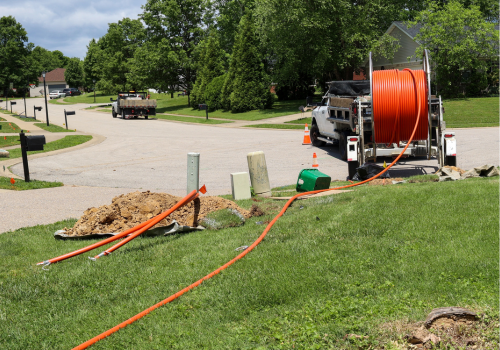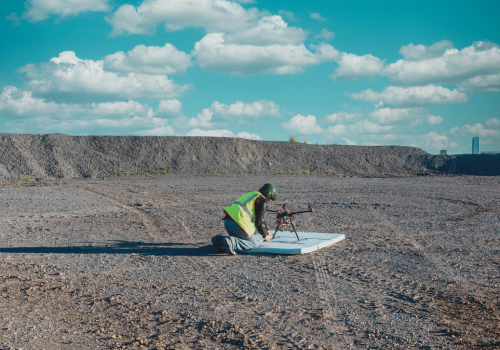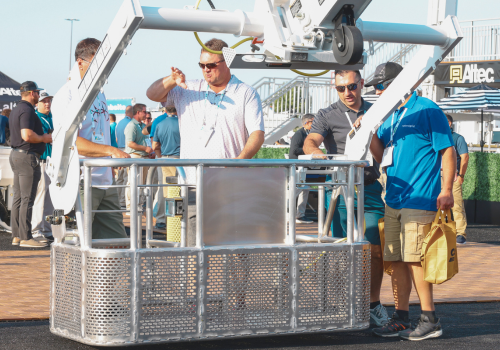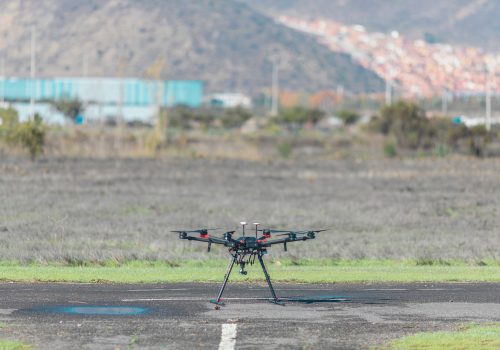Utility companies are rapidly expanding how they use drones—and the future is even more promising. As technology advances, drones are becoming indispensable tools for proactive maintenance, hazard response, security, and mapping. Here’s what lies ahead.
Drones—formally known as unmanned aerial vehicles (UAVs) or unmanned aircraft systems (UAS)—can inspect power lines at speeds of up to 40 mph, making them far more efficient than traditional inspection methods. They’re also safer than putting workers in bucket trucks, where they face risks from falls and electrical exposure. And with the high cost of a single truck roll, drones present a cost-effective alternative.
“Drones have increasingly proven to cut costs and increase safety for utility providers in many facets—from preventative maintenance and inspection to fire prevention and temporal change detection. I anticipate drones becoming a staple within every utility company’s daily lives,” says Wyatt Robbins, UAS Sales Director at Frontier Precision.
As artificial intelligence, edge computing, and 5G connectivity evolve, drones will become even more autonomous, precise, and integrated into daily maintenance workflows. Soon, utility drones may operate in coordinated fleets, communicate directly with asset management systems, and even initiate preemptive repairs.
Evolving Use Cases for Drones
Beyond regularly scheduled and post-storm inspections, utility companies are finding even more ways to put drones to work.
“Utility companies have many use cases for drones,” says Robbins. “For one, just having the ability to reference a dataset and compare future datasets aids in planning, change management, and forecasting. This increases the ability for utilities to reduce costs, increase safety, and plan for the future.”
“In the near future, we’ll likely see AI-driven drone swarms that can independently inspect and diagnose entire grids without manual piloting,” Robbins adds. “This will radically change response times and long-term asset maintenance.”
Paired with AI, drones now provide real-time data transmission and analysis. Through automatic fault detection, drone imagery is processed instantly to identify issues like damaged insulators, corrosion, or vegetation encroachment. This enables faster hazard identification and proactive response.
Other emerging uses:
- Search and rescue: Drones can quickly survey hard-to-reach areas to locate missing persons.
- Environmental impact mitigation: Especially helpful in ecologically sensitive areas, drones reduce the need for disruptive vehicle access.
- Pipeline mapping: Energy companies use drones to verify and update old pipeline maps, replacing approximate coordinates with accurate GPS data.
- Security: Equipped with automated battery exchange, drones can provide 24/7 infrastructure monitoring.
- Construction oversight: Drones offer progress tracking and documentation for new utility builds.
Preparing for the Next Generation of Drones
The type of drone and its features will greatly influence how successful your implementation strategy is.
1. Mid-size quadcopters (under 55 pounds) are common and can carry multiple sensors.
2. Small drones (under five pounds) are great for tight areas like distribution poles or substations.
3. Fixed-wing drones offer long-range monitoring—up to 3x farther than quadcopters.
4. Hybrid drones combine gas and battery power for longer flight times (covering over 1,000 acres) and heavier payloads.
The future of drone hardware is equally exciting. LiDAR allows users to build detailed 3D models of terrain and infrastructure. Thermal imaging helps identify electrical hot spots. Zoom capabilities up to 30x and autonomous navigation are becoming standard. Looking ahead, expect even more seamless syncing between drone data and utility asset management systems, further streamlining operations and reducing manual labor.
“As drone platforms become more open and customizable,” Robbins says, “utilities will be able to design workflows where drones not only inspect but help automate repair prioritization, material staging, and even trigger dispatches.”
Choosing the Right Drone for Tomorrow’s Work
When investing in drone technology, utility companies must think beyond today’s needs.
Flight time, payload, data security, and software compatibility will all be key considerations. NDAA compliance is essential when operating near critical infrastructure. Electromagnetic interference resistance is vital when flying near high-voltage lines.
“I always like to tell people to start from the sensor and work your way up to the drone to decide what platform is best for you,” Robbins explains. “If you’re using LiDAR, you’ll need a larger drone that travels efficiently—perhaps a fixed-wing platform. For visual inspections, start with your desired camera, then select the drone that can support it.”
Accessories like lighting, safety gear, flight tracking software, and post-processing platforms also play a critical role in long-term success.
“Frontier Precision helps walk you through all of the requirements when starting, expanding, or updating your drone program,” Robbins adds. “From new sensors and platforms to fleet management and training, we tie it all together from one trusted source.”
What’s Next
From cost savings and safety gains to AI-assisted maintenance and predictive analytics, drones are reshaping utility infrastructure management. As regulations evolve and sensor tech advances, the next decade promises smarter, faster, and more autonomous drone fleets built for the grid of the future.
See It for Yourself
Curious about how the latest drone technology is shaping the future of utility maintenance? Don’t just read about it, see it in action. At The Utility Expo, happening October 7–9, 2025 in Louisville, Kentucky, you'll find cutting-edge UAV platforms and experts ready to answer your questions. It’s your chance to get hands-on with the tech that’s changing the industry.
See the full list of companies that will be exhibiting at The Utility Expo 2025: Exhibitor Directory.
Subscribe to The Utility Expo monthly newsletter to receive more industry insights like this.
Read Next
Drone Powerline Inspection: What to Consider and How to Choose the Best Drone












